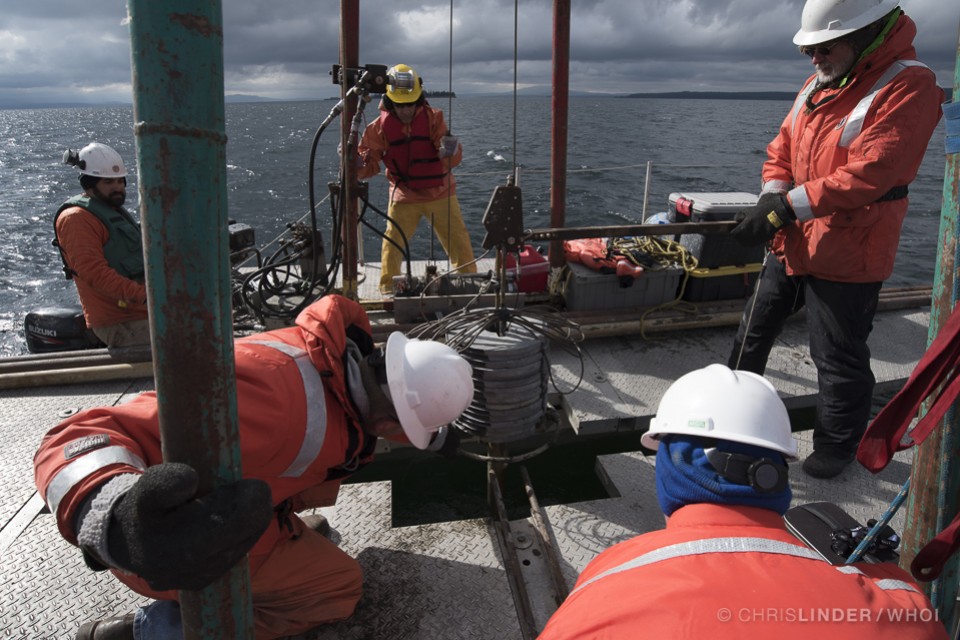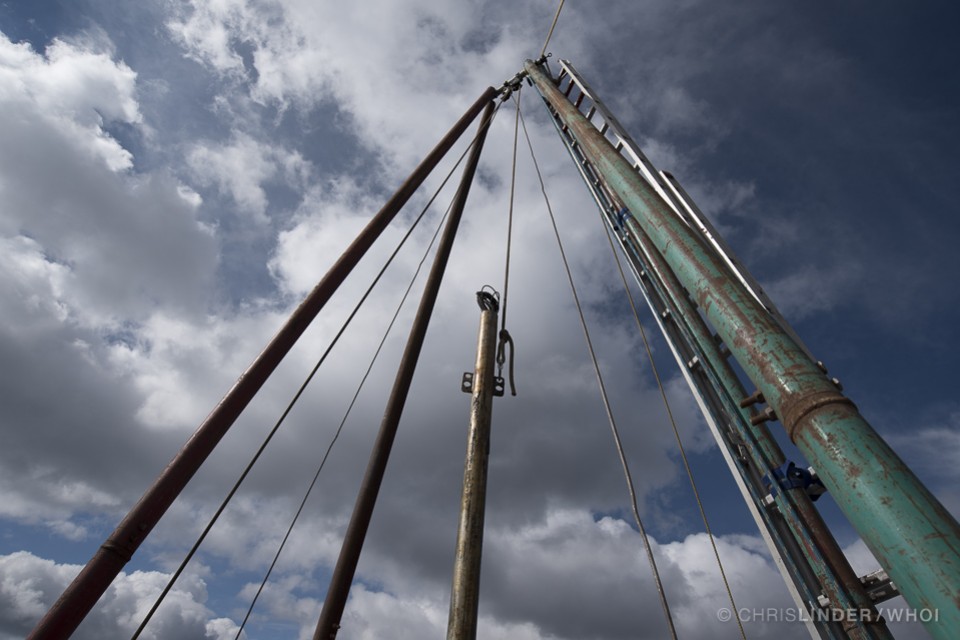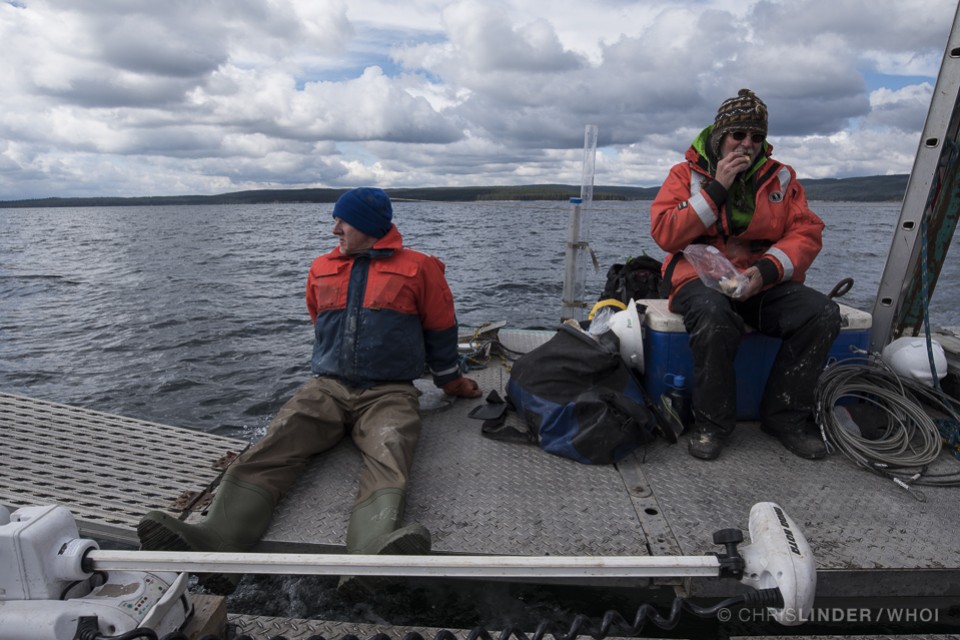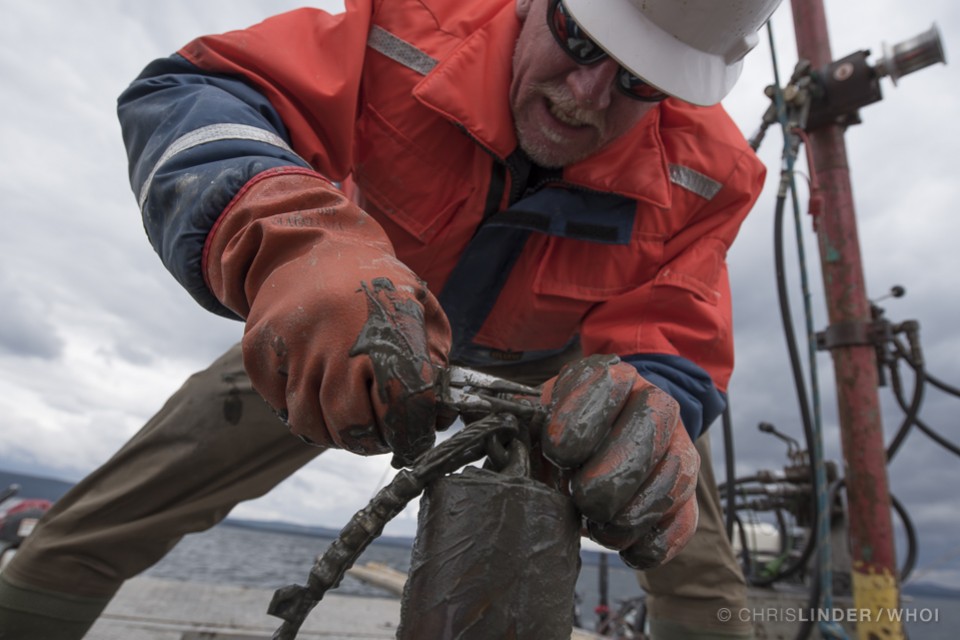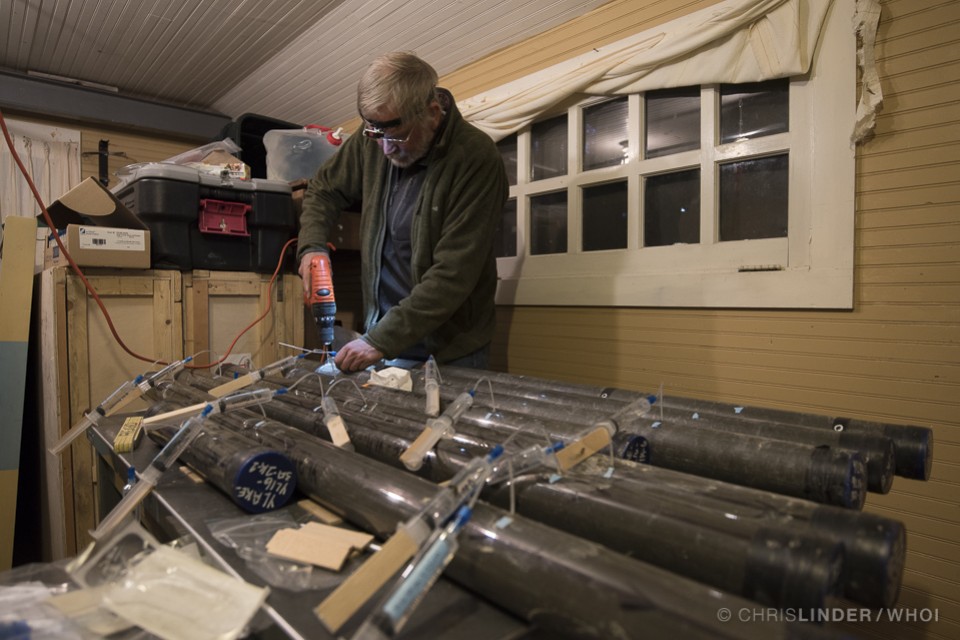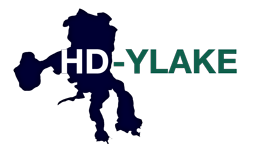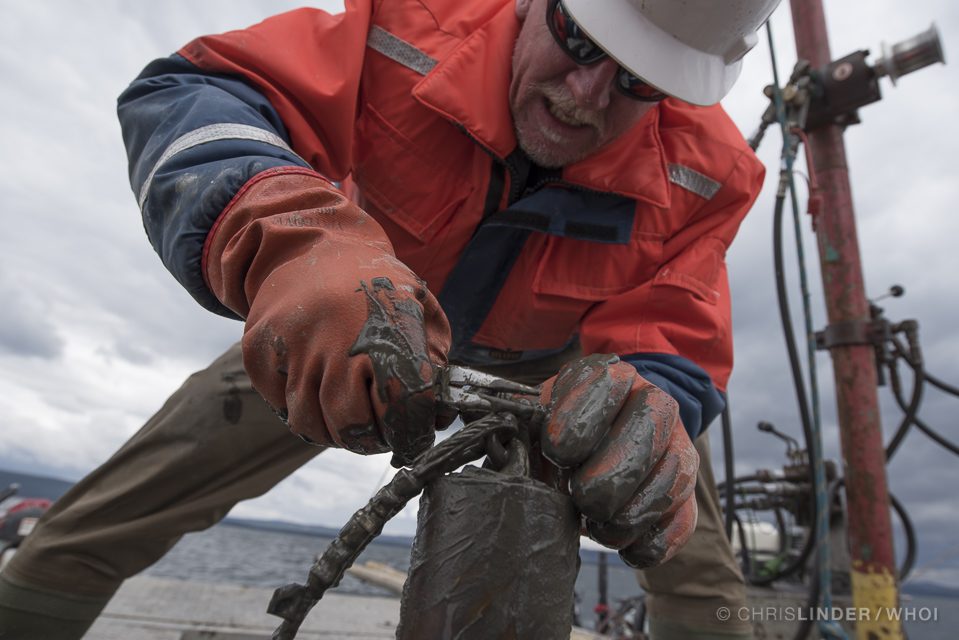After the previous day’s success with the first core, the team was eager to collect as many cores as possible while the weather remained calm. With that in mind, the group was already underway on the coring rig shortly after sunrise. Click through the slideshow below to see what it’s like to work on the coring platform, which has no shelter or facilities.
Over the next few days, the coring team collected eight cores including one from each of the six sites. Several cores were 40 feet in length (previous cores from the Lake maxed out at ~28 feet), and one of the cores may have penetrated into glacial flour, meaning it may provide a complete record back to the last glaciation. Many of the cores contained significant amounts of gas, probably carbon dioxide, especially the Stevenson Island core. The team is thrilled with the coring effort and eager to see what stories the cores will reveal.
Photos by Chris Linder, WHOI. Work was completed under an authorized Yellowstone Research Permit.
A cold gray dawn greeted the team, and the glassy lake surface promised a good day ahead. Work was completed under an authorized Yellowstone Research Permit.
Rob Sohn helps to stabilize the core before deployment at the first site, within sight of the historic Lake Hotel. Work was completed under an authorized Yellowstone Research Permit.
Pat Shanks (furthest right) guides the core assembly so that it fits through the 'moon pool' in between the skiffs. The pile of weights is what does the work of pushing the core barrel into the lake floor. Work was completed under an authorized Yellowstone Research Permit.
The gray morning gave way to a broken sky with lots of foreboding clouds, but the team made quick work at the Lake Hotel site, collecting two cores in two hours. Work was completed under an authorized Yellowstone Research Permit.
Rob Sohn (left) keeps an eye on the weather while Pat Shanks (right) grabs a quick bite as the rig motors to the second site of the day. Work was completed under an authorized Yellowstone Research Permit.
Coring is muddy work. Work was completed under an authorized Yellowstone Research Permit.
Processed and ready to go: one of the day's three successful cores is ready for transport to the lab. Work was completed under an authorized Yellowstone Research Permit.
Pat Shanks extracts pore fluid samples from the cores. The sediments are porous, and the fluids in the pores can provide important information about how the hydrothermal fluids interact with the sediment layer on their way into the lake. Work was completed under an authorized Yellowstone Research Permit.


